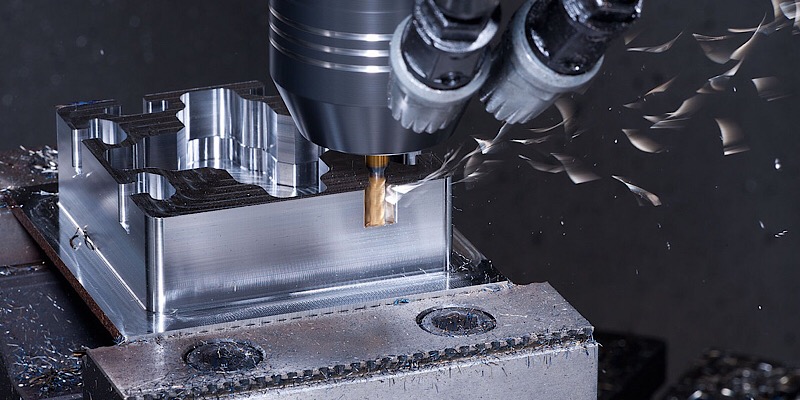An Overview of the Basics of Aluminum Machining
The application areas of aluminum CNC machining are wide, and aluminum is one of the most popular alloys for CNC machining. The element itself – pure aluminum (Al) has poor mechanical and machining properties, which is why it is rarely used for milling and turning. In addition, this alloy is difficult to use as a construction element due to its soft nature, and during the forming process, it causes problems by producing long and problematic chips, which require better chip removal.
Therefore, customers usually choose aluminum alloys with better performance and rigidity for larger machines. This is why pure aluminum is not the best material for machining, and different metal compositions can improve its performance and quality. Also from a production point of view, different alloys can make aluminum CNC machining easier and more efficient. What’s more worth mentioning is that although most people are used to saying “aluminum”, the vast majority of aluminum-based components and parts are made of some alloy.
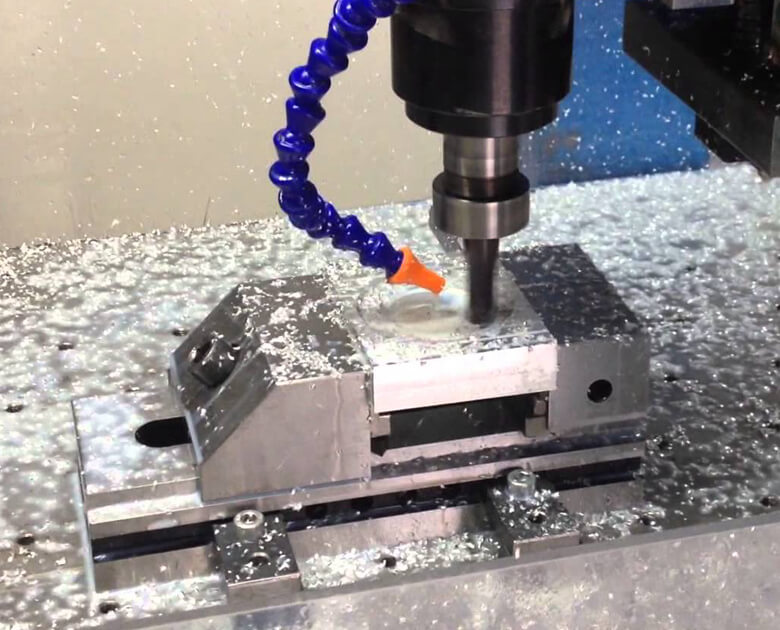
1.What’s new about aluminum alloys?
Although aluminum as an element is common and has been known for many years, it was not widely used in the industry until the late 1890s. The metal itself has been known for hundreds of years, and the ancient Romans mentioned its existence, calling it “silver metal made of aluminum.” In the early 19th century, aluminum was popular for more home-centric applications—Napoleon Bonaparte, for example, was famous for using aluminum cutlery to serve his food.
In other words: in the 19th century, aluminum was fashionable, but unpopular as a material for producing industrial parts. This changed in the late 19th century, when new methods of processing aluminum were discovered, and the material itself could be used for industrial purposes. Today, we can see aluminum elements and parts very commonly.
The element itself is obtained in a process of reducing impurities and bauxite and deoxidizing it, which produces pure aluminum, sometimes called the “1xxx series.” To improve the material’s properties, aluminum is alloyed with other elements such as copper (Cu), manganese (Mn), silicon (Si), magnesium (Mg), and zinc (Zn). These additives give the alloy the desired properties, making aluminum alloys useful in many industries. Today, the alloy is an important building and construction material and is often used in machining processes such as CNC milling and turning.
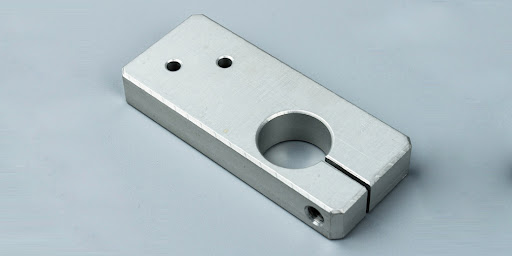
2.What are the properties of aluminum alloys?
Among the many properties of aluminum alloys, we can highlight some that are crucial from the perspective of CNC machining:
1) Lightweight, but strong and hard
The tensile strength of aluminum alloys from 70 MPa to 700 MPa makes it a perfect building material. Contrary to steel, low temperatures do not reduce its mechanical properties. Long-term material science research also shows that the actual service life of aluminum parts can reach 80 years. Such performance is not common, and almost no other metal alloy has similar durability, making aluminum alloys gradually stand out in the manufacturing industry.
2) Corrosion resistance
A thin layer of aluminum oxide forms on the surface of aluminum when it comes into contact with the atmosphere, which provides good corrosion resistance even in environments with low sulfur content. Even if corrosion occurs on the surface, it will not affect the aluminum structure, but only the beauty of the part. So in order to ensure the beauty of aluminum, anodizing or powder spraying can also be used as a form of surface treatment.
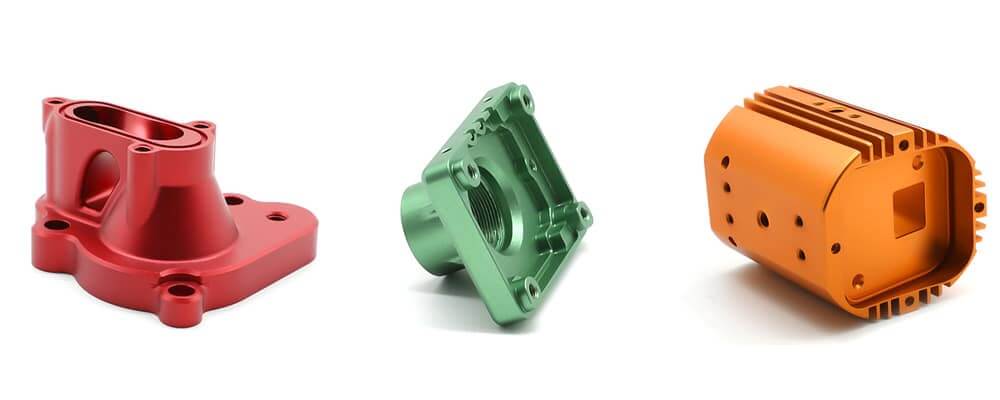
3) Easy processing and machining
This process can produce complex aluminum profiles with fixed geometries, providing good temperature and electrical conductivity, and is widely used as a conductor. This property makes machined aluminum a very popular and effective material for many types of radiators.
4) Environmental protection
Aluminum can be reused and its mechanical and physical advantages are hardly reduced. In today’s social environment where environmental protection is gradually emphasized, this property of aluminum makes it more favored by the manufacturing industry and becomes the preferred target among similar materials.
3.How does CNC machined aluminum change the automotive industry?
One of the most innovative cars in the world today is the Tesla Model S. Its body is made of aluminum, which greatly reduces the overall weight of the car. In addition to better acceleration speed and balance, a lighter body also affects the average range of electric vehicles.
Aluminum as a material is also becoming more and more popular in the railway industry. Rail cars will use a large number of CNC machined aluminum profiles to reduce the weight of the whole vehicle and achieve modular assembly. This production method reduces production costs and further maintenance costs. It is estimated that the demand for aluminum parts and components in the automotive industry will increase by about 30% each year.
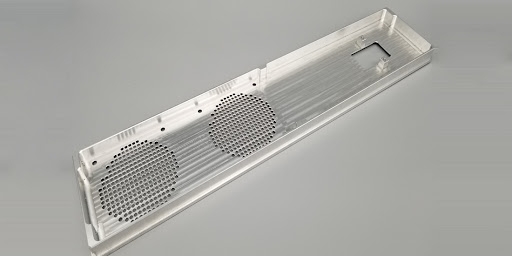
4.High processing precision and unique design
Aluminum is popular not only because of its technical advantages, but also because of its aesthetics. The good light reflection of white and silver, as well as the choice of more interesting colors that can be achieved through the anodizing process, make this material suitable not only for architectural purposes, but also for designers.
The surface of aluminum can be easily improved not only in the final stage of aluminum milling or turning, but also in grinding treatments. For example, glass blasting, satin polishing, brushing or vibration can improve the surface of the part and make it almost glass-like.
This is why aluminum CNC machining has inspired many designers and engineers, who use this material not only for architectural purposes, but also for aesthetic purposes. A good example of this approach is the Displine flat wall frame, which combines functionality with perfect design. A similar approach to aluminum can be seen in the industrial style, a popular trend in interior and furniture design.
5.How can aluminum alloys fit into ecology?
Due to the growing demand, the continuous development of technology and the overall well-being, we can also focus on sustainability and ecology. Aluminum alloys are not only the perfect material for many innovative designs and Industry 4.0, but their use has a significant and positive impact on the environment. Because the material itself can be reused, melted and cast many times without losing its properties. Furthermore, remelting aluminum consumes only 5% of the energy required to produce the same amount of alloy from ore. This advantage has a significant impact on reducing energy consumption in many industries.
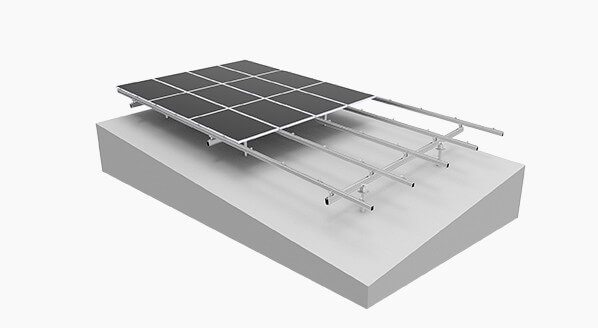
On the other hand, aluminum as a material is also widely used in the field of modern renewable energy. Construction components for photovoltaic power plants and wind farms, which are made of aluminum alloys, are just one of many examples. Their low weight and corrosion resistance make them a very suitable material even for the most modern applications.
